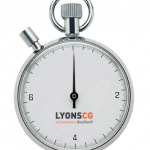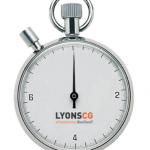
Load Time: A Misleading Metric
There’s no doubt site speed is key to eCommerce. After all, it’s associated with increased traffic and a conversion rate. So more speed, more money.
And, when it comes to measuring speed, most everyone is familiar with “The 8 Second Rule” that says if the load time of a web page exceeds eight seconds, visitors are unlikely to wait.
The Need for Speed
And here’s where the confusion begins to arise. Page load is too narrow a metric to use on its own because it ignores the more important part of the equation that influences traffic and conversions – customer experience. If a shopper is on a site to make a purchase shouldn’t the major measure of success be how long it takes for them to be able to do just that?
So why does page load get such attention as a measure of site speed? Look no further than Google and search engine rankings. Site speed is used in Google’s algorithm – along with more than 200 other variables – but does anyone really know how much weight it’s given? Moreover, Google has a vested interest in site speed – and it relates once again to user experience. If you’re conducting a search, you want to see results quickly so you can get on with whatever you’re trying to accomplish.
Site Speed Measure that Really Matters
So what’s more important: a fast response or a satisfying user experience? The answer is you need both to be successful in eCommerce. That’s why so much focus on page load times is mislaid.
Keeping the shopper in mind, is there a way to measure speed that provides a clearer picture? Here are four common measures of speed:
- Time-to-First-Byte (TTFB) is a useful data point because it indicates how long it takes the server to create the response page plus the time it takes to transfer the page from the server to the client.
- Time-to-Start-Render (TTSR) is important because it’s the first point in time the user sees something displayed on the screen; this feedback reassures them their click actually did something.
- Time-to-Interact (TTI) is the point at which the user can take their next action such as clicking on a button.
- Total-Load Time (TLT) is when everything for the page has completely downloaded and been processed by the browser.
Let’s lay them out visually so you can see how they relate to each other. How does TTI as a measure capture fast response and satisfying user experience?
A shopper seeking to perform a search, view an item, fill up their cart, or checkout wants to know their click worked. As a metric, TTI marks the point when they can begin to take action. While the page may still be loading content in the background, the user experience is not affected.
More Happy Shoppers Means More Business
Placing too much emphasis on page load, which doesn’t really take into account user experience, can give you a false sense of security. Instead, you should consider time-to-interact as a more definitive measure of speed. Providing a satisfying user experience increases the chance of making a sale and gives customers a reason to return often to shop as well as tell friends and family about your site.
Get the Speed You Need
So how can you improve time-to-interact without sacrificing the quality of the customer experience? Best design practices and optimized coding are only part of the answer. Your hosting infrastructure also plays a role in site speed.
So, if you want to optimize your site for speed and user experience, download a copy of How to Measure Site Speed in eCommerce. Get practical advice on making sure your site works as fast as it can.

